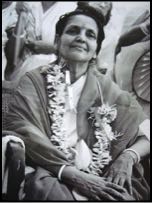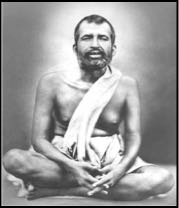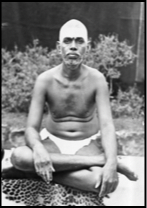



Spiritual-Teaching.org




"There is no virtue higher than forbearance." Holy Mother Sri Sarada Devi
From the Bhagavad Gita and Sri Ramana Maharshi
In Sanskrit, the word “dharma”, derived from the root verb dhri, means “to hold, to put on”, also literally as an imperative act,
“to wear!” Here we see the correlation with the command of Jesus in the Gospels: “Put on the armor of Rightessness... wear the robe of Salvation!”
“Dharma, therefore, is the cosmic law that runs the mechanism of the universe; and after accomplishing the primary God-uniting yoga dharma (religious duties), man should perform secondarily his duties to the cosmic laws of nature. One should observe rational conduct in all ways!
The Masters and scriptures of a “Life in the Spirit” confirm; the beginning of partial surrender essentially engages man in the performance of virtuous dharma. We should begin our partial surrender by adhering to the upadesha (spiritual teaching) of Devaraj Narada, who declared in His Bhakti Sutras:
“Seek satsanga (good association) and abandon (relinquish) dussanga (evil association).”

The central point surrounding an understanding of “surrender” as having the dual role of maintaining an inwardly God-pointed consciousness with an ongoing movement (a seeking) of satsanga does not present a contradiction in terms of direction.
Sri Ramana defined the true meaning of “satsanga” to Srimat T.R. Kanakammal, one of the few remaining direct disciples of the Maharshi. She has related that Bhagavan declared the Sanskrit word “sat” to mean “Being”, and the word “sanga” to mean “melt”. Thus to seek satsanga is conscious movement within by which we melt into Being! Therefore, by implication, the meaning of dussanga is to melt through conscious external movement into non-Being (devoid of Godliness). This is brought about by habitually seeking adharmic (non-virtuous) pleasures that destroy intelligent discrimination. The end result of one such as this is clearly described by Sri Krishna in Gita 2:63: “Buddhinasat pranasyati – From destruction of discrimination, one is lost.”
The “melting within” referred to by Bhagavan is a protracted process of sadhana tapa, a spiritual process of purification. It is not a whimsical imaginative fantasy of drifting within to a so-called instant blissful awareness of “oneness” with the Self. Bhagavan’s use of the word “Being” undeniably refers to Jnana (direct Knowledge of the Self), the Vijnana Vedanta of the Kaivalya Upanishad, direct experience of full awareness of Divinity within. The process of mind control (tapas) that induces the melting of impurities is a protracted meditative process of concentration, often empowered by contemplation (thinking of the Lord) or invocation through remembrance (japa) of God, which at the final stages culminates with vichara (reflection, enquiry). In direct reference to this truth, Bhagavan related how this is achieved:
“Know that the wondrous jnana vichara is only for those who have attained purity of mind by softening and melting within.
Without this softening and melting away of the mind, brought about by thinking of the feet of the Lord,
the attachment to the “I” that adheres to the body will not cease to be.” 2
For many, this guidance from the Maharshi inspires determination to forge ahead with a conviction that the end is glorious, even close. For many more, these words fall upon us as more “tall talk”, being far beyond comprehension, much less as a means of guidance with practical application. There is, however, some consolation afforded to us in the undeniable fact that even if Bhagavan were to convey his teaching to us face-to-face, as he did to many, there would still be “mountains to move” through personal effort before we could lay aside our tools of sadhana. 3
This fact was observed and documented by a disciple of Bhagavan who remained under his direct guidance for 14 years:
“To beginners as well as advanced sadhakas alike, this mind control appears to be a formidable feat, yet the Master encourages them to go ahead and practise – at all events to make a beginning. He constantly dins into us the inspiring notion that we are already Self- realised and that, if we are not aware of it, the obstruction to that awareness should be removed by investigation – vichara –
which is as logical as it is simple.
“To hear it direct from him, this “Self-knowledge”, rather the way to Self- knowledge, is “the easiest thing there is” (Atma Vidya); but, judging from the questions constantly asked of him, and later of his disciples, there appears to be the need for much spade work before its central idea takes a firm hold on the seeker. The Master’s obvious meaning seems to be that, even apart from the psychological efficacy of the vichara proper, preoccupying the mind with a single theme to the exclusion of all others, if doggedly practiced, will not fail to produce beneficial results. It will tend to reduce the oscillations of the thinking processes, and thus render the mind amenable to concentration on the supremely important work which is to follow, which by itself is a splendid achievement. Finding the answer to the query “Who am I?” is not the immediate burden of the practice in the beginning. Stability and fixity of the restless, mercurial mind is the first aim, and this can be achieved by constant practice and by frequently pulling oneself back to the subject of the meditation whenever the mind strays away. When the mind has attained an appreciable degree of concentration, which means of depth, it will be time to think of the answer. Some sadhakas are fortunate enough to begin with a mind already accustomed to concentration, either “naturally”, or by training, or through intense fervor, so that they are able to go straight to the application of the vichara, and thus make a more or less rapid progress, according to the intensity of their determination, without much strain. For the Master tells us that mental calmness, that is, controlled mind, is essential for a successful meditation.”
Even knowing this, and even being graced with daily having the cherished gaze of the Maharshi rest upon you, still one succumbs to human frailty and a heart that cries out:
Devotee: “Surrender is impossible.”
Maharshi: “Yes. Complete surrender is impossible in the beginning. Partial surrender is certainly possible for all. In course of time that will lead to complete surrender. Well, if surrender is impossible, what can be done? There is no peace of mind. You are helpless to bring it about. It can be done only by surrender.”
D.: “Partial surrender - well - can it undo destiny?” M.: “Oh, yes! It can.” D.: “Is not destiny due to past karma?” M.: “If one is surrendered to God, God will look to it.” D.: “This being God’s dispensation, how does God undo it?” M.: “All are in Him only.”
D.: “How is God to be seen?” M.: “Within. If the mind is turned inward God manifests as inner
consciousness.” 4
But alas, to be instructed merely to “turn within”, hardly ever satisfies an aspirant who is engaged in an active practice of meditation. For they know from direct experience that what lies “within” can, and usually does, contain more concentrated forms of a great danger - a powerful and destructive enemy. Lord Krishna warns Arjuna of this great foe to the realization of the Self in the beginning chapters of the Bhagavad Gita:
Arjuna said: “By what is a man impelled to commit evil, Varshneya [an epithet of Lord Krishna], seemingly against his own will, as if urged thereunto by force?” The Holy Lord said, “It is desire, it is anger, that’s born of the rajo-guna: of great craving, and of great sin; know that to be the enemy...The senses, mind and intellect are said to here be its abode...thus restraining the self (here the use of ‘atman’ denotes the mind) by the Self, then destroy that enemy so hard to conquer: desire.”
In the closing chapters of the Gita the Lord clearly declares the means by which we can “put His teaching into practice.” Paramahansa Yogananda again helps to metaphysically clarify for us this oft-quoted sixty-sixth stanza of Chapter 18, which although is deemed by the most learned scholars as the quintessential heart of the entire Gita, is paradoxically the stanza that receives the most varied and diversified interpretation!
Sri Krishna says: “O Arjuna, be a real renunciant! By the practice of yoga meditation withdraw (vraja) your mind, intelligence, life force, and heart from the clutches of the ego. From the physical sensations of sight, hearing, smell, taste, and touch, and from the objects of sense pleasures! Forsake all duties toward them! Be a yogi by uniting yourself to My blessed presence (mam ekam saranam) in your soul. Then I will save you; by nonperformance of the lesser duties to the senses under the influence of delusion, you will automatically find yourself free from all sinful troubles. If you remain in ecstasy with Me, fulfilling all divine duties as directed by Me, forsaking all ego-instigated duties, you will be liberated.”
“The ordinary man’s mind is usually identified with external possessions and sense pleasures connected with the surface of the body. Therefore, physical consciousness is sustained by the mind, intelligence, and life force operating through the lower (rajasic and tamasic) centers of awareness. Thus, the searchlights of intelligence, mind, and life energy continually operate externally, feeding the nervous system and sustaining and revealing the sense pleasures and physical consciousness.” 5
The yogi who persists in withdrawing awareness within through meditation (aksara japa, repetition of the sound of the Name of God), or atma vichara (reflection upon from ‘Whence we came’) effectively reverses the searchlights of intelligence, mind, and life force inward toward the sheltering presence of the object of meditation – God! This is a protracted process, for through it the mercurial mind is first rendered steady, then ultimately still. For it is in stillness that man approaches the altar of the Spirit!
Sri Ramana Maharshi assented in full agreement with this understanding of the Gita’s “teaching put into practice”. With his lustrous gaze, communicating to us the very embodiment of divine stillness, and his voice emerging from pure consciousness, he declared:
“In the Bhagavad Gita it is said that it is the nature of the mind to wander. One must bring one’s thoughts to bear on God. By long practice the mind is controlled and made steady.” 6
_______________________________
1) The Bhagavad Gita, God Talks with Arjuna, Sri Paramahansa Yogananda. Yogoda Satsanga Society of India 2002.
2) Padamalai, Teachings of Sri Ramana Maharshi Recorded by Muruganar, Avadhuta Foundation 2004, p. 186. (Reference to Sri Ramana Jnana Bodham, vol. 7, verse 340).
3) Sadhana is derived from the Sanskrit root “sadhan”, which means “instruments or tools”. Sadha-na therefore means the methods by which the tools are employed to achieve the desired goal.
4) Guru Ramana, S.S. Cohen, Sri Ramanashramam 2003, p.66-67. 121 Talks with Sri Ramana Maharshi, recorded by Sri Munagala Venkataramiah, Sri Ramanashramam 2006, Talk 244.
5) Bhagavad Gita, Chapter 3, sections of verses 36-43. 123 The Bhagavad Gita, God Talks with Arjuna, Sri Paramahansa Yogananda. Yogoda Satsanga Society of India 2002.
6) Talks with Sri Ramana Maharshi, recorded by Sri Munagala Venkataramiah, Sri Ramanashramam 2006, Talk 91.